 Throughout history, kings and queens have often shown their dogs far greater love and affection than their spouses or children. Here are just a few examples where dogs ruled.
Throughout history, kings and queens have often shown their dogs far greater love and affection than their spouses or children. Here are just a few examples where dogs ruled.Dogs first, People Second
Frederick the Great showed little attraction toward women and had no children. His beloved greyhounds were his real babies. His dogs had free reign of the palace including their own gallery where they could run amuck tearing the furniture to shreds and pooping in every corner. Frederick even erected a magnificent white marble mausoleum to his greyhounds after their death with plans for his own tomb to lie between them. His blatantly, ignored wife, Elizabeth Christine, could only hope for such honors.
Queen Victoria is famous for being "amused" by her dogs, but not so much by her children. To punish her grandson, George V, for his poor table manners, Victoria commanded him to eat under the table like a dog. In an effort to emulate the canine competitor for his mother's affections, George proceeded to remove all his clothing so that he could be (like a dog) unburdened by clothing in his punishment. It doesn’t take a psychologist to discern that Victoria’s children may have felt that they came in second place. Her own emotions toward those bundles of joy were expressed when she said of her babies,
 'til they have become a little human; an ugly baby is a very nasty object...and the prettiest is frightful when undressed...as long as they have their big body and little limbs and that terrible frog-like action.' 1
'til they have become a little human; an ugly baby is a very nasty object...and the prettiest is frightful when undressed...as long as they have their big body and little limbs and that terrible frog-like action.' 1Perhaps if her babies had been born with fur than her affections may have been different.
Peter the Great was also not much of a family man except when it came to his dogs. He showed little remorse after locking his sisters up in a nunnery and murdering his son, but his beloved dog, Finette was by his side every second of the day.
Dogs in the Bedroom
Dogs were often afforded luxuries that pandering courtiers could only hope for, including coveted access to the monarch’s bedchamber. Peter the Great’s miniature greyhounds slept in his bed sharing vermin and covers.
Catherine the Great’s boudoir was overrun with her husband, Peter’s 8-10 hunting dogs. She complained in her letters of the stench and the little presents they left on her pillow in the form of dog poop.
Napoleon was forced to share his bed with Josephine’s beloved pug, Fortune. During the Revolution, Fortune aided his mistress during her imprisonment in Carmes. The pugnacious pug smuggled secret messages hidden in his collar to Josephine’s children. Later, Napoleon would have to compete for Josephine’s affections with her loyal dog and complained,
‘As if a pretty woman could give up her routine, her friends, her Madame Tallien or a dinner-party at Barras’ house and the performance of a new play of Fortune, yes! Fortune! You love them all more than your husband…’ 2
Fortune put the jealous husband in his place by biting him on the leg.
Doctors in the Tudor age even prescribed putting a dog in bed with their monarch as the cure for stomach cramps. These dogs were called “comforters.” A puppy as a cure may sound like quack medicine, but you could actually view it as the forerunner of the hot water bottle. I personally would take a warm puppy over a hot water bottle or heated pad any day.

Throughout the 16th –19th century, dogs also controlled vermin in the palace and bedroom. (Cats had a hard time finding work because they were considered vermin themselves.) Louis XI took great pride in watching his mice-catching dogs working while he lay in his bed. Queen Victoria had a legendary rat catcher – a Dachshund named Dackel.
Even more important than vermin controllers and bed companions, dogs also protected their owners while they slept. In 1549, the power-hungry Thomas Seymour was planning to marry Princess Elizabeth I and kidnap his nephew, King Edward VI (son of Henry VIII). When Seymour crept into the king's bedchamber, Edward’s loyal guard dog barked furiously alerting his master of his uncle’s evil intentions. Seymour silenced the yapping dog by shooting him dead, but the guards had already been alerted in the melee. Edward might have even pardoned Seymour for his silly rouse, but killing his favorite guard dog was unforgivable. Thomas Seymour lost his head on Tower Green two months later in 1549.
Marie Antoinette’s spaniel Thisbee also slept in her room to alert her of intruders. Thisbee accompanied the family after they were transferred to the Temple. What became of the dog is still unknown.
Dogs at the Dinner table
 Louis XIV fed his dogs personally with biscuits baked by his pastry cook. Queen Victoria’s dogs often shared the dining table with her guests. Prince Albert’s favorite greyhound, Eos ate with a fork like a true regal dog.
Louis XIV fed his dogs personally with biscuits baked by his pastry cook. Queen Victoria’s dogs often shared the dining table with her guests. Prince Albert’s favorite greyhound, Eos ate with a fork like a true regal dog. The painting to the left may look like a typical medieval banquet with rambunctious dogs climbing all over the table, but these dogs were actually food tasters, called chiens-gouteurs. If the dog didn’t die from the royal fare than everyone went ahead and enjoyed their meal. Can you picture it?…”ahh my dog appears to be still breathing. Everyone eat up.”
The painting to the left may look like a typical medieval banquet with rambunctious dogs climbing all over the table, but these dogs were actually food tasters, called chiens-gouteurs. If the dog didn’t die from the royal fare than everyone went ahead and enjoyed their meal. Can you picture it?…”ahh my dog appears to be still breathing. Everyone eat up.”Dogs in the Stateroom
Dogs could also change the course of politics. Pope Clement VII did not share history’s fondness for the greyhound. Legend has it that Clement was ready to sign Henry’s divorce papers until the English envoy’s greyhound knocked over the stool supporting the pope’s gouty foot. Screaming like Andy Rooney on a rant, the ornery Clement abruptly refused to discuss Henry’s divorce.
Peter the Great forbid any petitions to be presented to him under pain of death. When a courtier was sentenced to the knot, Peter’s wife, Catherine, had the poor man’s petition presented to Peter by attaching it to the collar of the Czar’s favorite dog, Finette. The industrious Catherine knew that only an appeal from Peter’s dog would be granted.
Dogs as Accessories
 We may balk at Hollywood’s trend to carry a dog around like a matching pocketbook, but queens were the first to invent the dog accessory. Royalty often got so attached to their lap dogs that they were literally joined at the hip. Mary Queen of Scot’s executioners was certainly surprised to find her small, Maltese hiding under her skirts after she was beheaded. The dogs of Versailles were taught to carry the noble ladies’ long trains. Not to be undone in the fashion department, dogs also wore regal coats and were heavily perfumed as to not offend delicate noses. And here is a trend that should surely come back amongst Hollywood’s pop princesses….doggy earrings. The poor pooch in this picture of Henriette Anne of England is wearing bright red dangly ones.
We may balk at Hollywood’s trend to carry a dog around like a matching pocketbook, but queens were the first to invent the dog accessory. Royalty often got so attached to their lap dogs that they were literally joined at the hip. Mary Queen of Scot’s executioners was certainly surprised to find her small, Maltese hiding under her skirts after she was beheaded. The dogs of Versailles were taught to carry the noble ladies’ long trains. Not to be undone in the fashion department, dogs also wore regal coats and were heavily perfumed as to not offend delicate noses. And here is a trend that should surely come back amongst Hollywood’s pop princesses….doggy earrings. The poor pooch in this picture of Henriette Anne of England is wearing bright red dangly ones.Without a doubt, these pampered pets ruled the palace. I have always had the belief that how people treat their pets is very indicative of their true nature. If you are interested in more information about dogs and cats in royal society then I highly recommend MacDonough's Reigning Cats and Dogs. MacDonough's work provides an intriguing look into the courts of some of our most raucous royals illustrated from the perspective of how they interacted with their pets.
Stay tuned for next week when cats get their say on how they ruled.
Source Notes:
(1) p. 120. Farquhar, Michael. A Treasury of Royal Scandal. New York, NY: Penguin Books, 2001
(2)p. 180. MacDonogh Katherine. Reigning Cats and Dogs. New York, NY: St. Martin's Press, 1999.

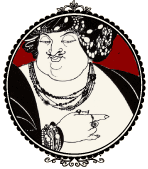

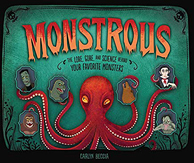
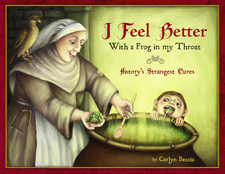
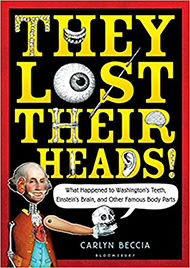
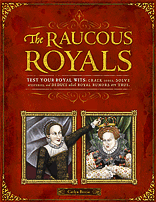

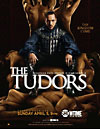

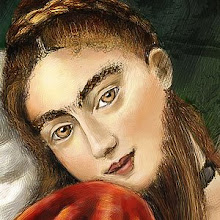
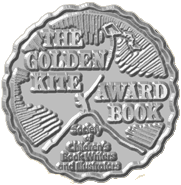
7 comments:
Wonderful post but George V was Queen Victoria's grandson, not her son. They actually showed that scene in Edward the King with Timothy West.
I remember that scene! And it wasn;t until I read MacDonogh's book that I realized it really happened.
oh and thanks for catching the typo. Yes, meant grandson. I will fix now...
btw, I just sent you a copy of The Raucous Royals to add to your royalty collection.
Dogs rule the city of Vienna; they in fact out-number the people! Usually, it is us poor husbands to have the pleasure of walking the kleinen Furzen.
I must admit, however, that I am quite fond of my Gaukerl, a black Miniature Schnauzer bitch, and I am not even royalty.
A most pleasurable post, Madame, except for what Queen Victoria said about babies. By God, I cannot imagine possessing those sentiments --much less voicing them-- about my own children when that were little!
Great website! I love the info! In the part about Edward VI's dog protecting him, it was actually Thomas Seymour - not Edward - who was trying to abduct the young king and marry Elizabeth.
oh you're right! good catch. I am always confusing my Seymour brothers. I will fix....
Glad you shared this post.
At Buffalo Veterinary Pet Clinic,we provide comprehensive veterinary care for Dogs, Cats, and Small Pets such as Vaccinations & Preventive Care, Illness & Injury Care, Surgery and Internal Medicine, Dentistry, Radiology and Microchipping.
We make sure that all your pets are well taken care of.
Has someone looked at the differences between wolves in a zoo that have never had access to human food and house hounds who have? That would seem to maximize differences in both nature and nurture.
E.g., do wolves react less to cooked food? Do house hounds react less to raw meat? Is there different sensitivity to some animal (beaver?) that city & suburban dogs never enounter? Do wolves react less to corn, rice and veggies that are part of commercial dog food? Is there any difference in response to flowers or perfumes?
Of course, differences in what they react to and what they're attracted to could come from differences in their noses and /or differences in the brain areas that process smells. But I'm personally more interested in the brain differences. That's the only area of me that I might be able to improve.
German Shepherd Puppies
Post a Comment